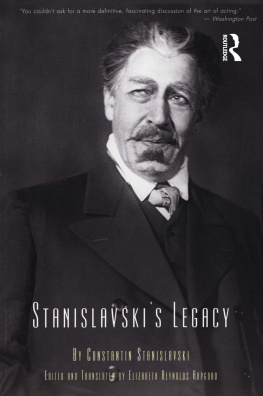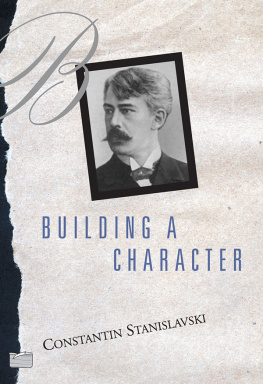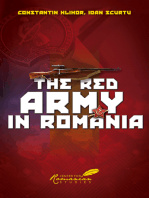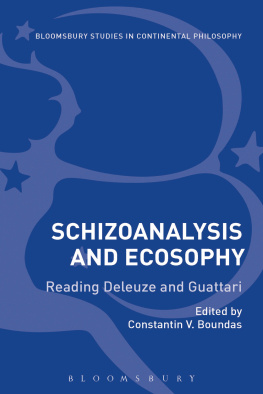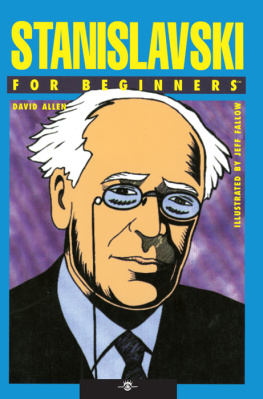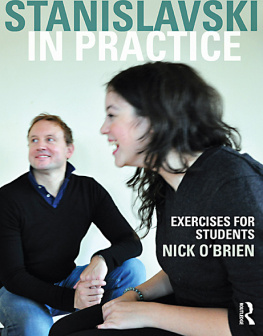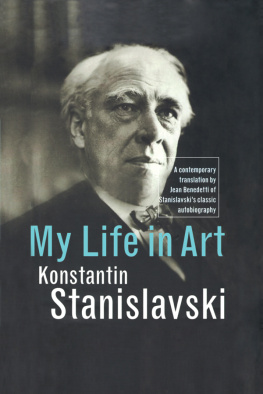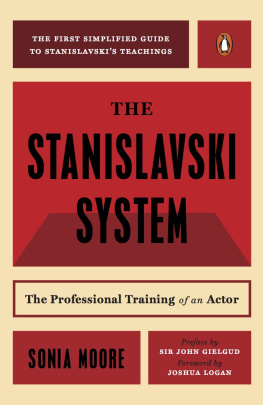Constantin Stanislavski - Creating A Role
Here you can read online Constantin Stanislavski - Creating A Role full text of the book (entire story) in english for free. Download pdf and epub, get meaning, cover and reviews about this ebook. year: 2012, publisher: Taylor and Francis, genre: Religion. Description of the work, (preface) as well as reviews are available. Best literature library LitArk.com created for fans of good reading and offers a wide selection of genres:
Romance novel
Science fiction
Adventure
Detective
Science
History
Home and family
Prose
Art
Politics
Computer
Non-fiction
Religion
Business
Children
Humor
Choose a favorite category and find really read worthwhile books. Enjoy immersion in the world of imagination, feel the emotions of the characters or learn something new for yourself, make an fascinating discovery.

- Book:Creating A Role
- Author:
- Publisher:Taylor and Francis
- Genre:
- Year:2012
- Rating:4 / 5
- Favourites:Add to favourites
- Your mark:
- 80
- 1
- 2
- 3
- 4
- 5
Creating A Role: summary, description and annotation
We offer to read an annotation, description, summary or preface (depends on what the author of the book "Creating A Role" wrote himself). If you haven't found the necessary information about the book — write in the comments, we will try to find it.
Creating A Role — read online for free the complete book (whole text) full work
Below is the text of the book, divided by pages. System saving the place of the last page read, allows you to conveniently read the book "Creating A Role" online for free, without having to search again every time where you left off. Put a bookmark, and you can go to the page where you finished reading at any time.
Font size:
Interval:
Bookmark:
Also by Constantin Stanislavski
AN ACTOR PREPARES
AN ACTOR'S HANDBOOK
BUILDING A CHARACTER
MY LIFE IN ART
The Seagull PRODUCED BY STANISLAVSKI
STANISLAVSKI IN REHEARSAL
STANISLAVSKI ON OPERA
STANISLAVSKI PRODUCES Othello
STANISLAVSKI'S LEGACY
A ROLE
Constantin Stanislavski
TRANSLATED BY ELIZABETH REYNOLDS HAPGOOD
EDITED BY HERMINE I. POPPER
FOREWORD BY ROBERT LEWIS
THEATRE ARTS BOOKS /
1961 BY ELIZABETH REYNOLDS HAPGOOD
ALL RIGHTS RESERVED
COPYRIGHT UNDER INTERNATIONAL COPYRIGHT UNION
ALL RIGHTS RESERVED UNDER PAN-AMERICAN COPYRIGHT UNION
LIBRARY OF CONGRESS CATALOG CARD NO. 6010494
Twelfth Printing, 1988
ISBN 0-87830-024-4
Grateful acknowledgment is made to
Leslie Irene Coger
for help on this book
Published by Theatre Arts Books
270 Madison Ave, New York NY 10016
Transferred to Digital Printing 2009
Publisher's Note
The publisher has gone to great lengths to ensure the quality of this reprint but points out that some imperfections in the original may be apparent.
by Robert Lewis
HERE, almost a quarter of a century after his death, are some more nuggets dug up from the vast gold mine of Stanislavski's continuous search for a truthful and artistic method of training actors and working on roles. So rich is the substance of Creating a Role, so provocative, that one feels it is possible to take many of the ideas presented and expand them into essays or books.
The first of the three parts of this book is a particularly brilliant break-down of how to work on a part. It will confirm, or clarify, many points for those actors and directors who already work along these lines. For those who don't, this study of Stanislavski's approach to his role of Chatski in Woe From Wit will be a revelation. This section, without the device of the teacher-pupil dialogue used in the rest of the book, seems to me to be the most lucid presentation of Stanislavski's aims so far.
Here we have a logical break-down of the rehearsal period from the first reading on. Beginnings being so important, Stanislavski tells us why it is advisable for the play first to be read to the cast by one person. He shows us how to recount the story of a play in actors terms, how to analyze the play and the roles, being careful to distinguish between intellectual and artistic analysis. He teaches us how to create a logical subtext to create an inner life which will give substance to the author's words. The most important, and least understood, aspect of the work, the search into one's own experience to arouse feelings analogous to those required in the part, gets a thorough airing.
Don't think that feeling is all that is stressed here. Unlike some modern self-styled practitioners of what they call The Method (no such arrogance will be found in Stanislavski's own writings) there is more than lip-service paid to beauty of language, lightness of verse, rhythm, imagination, and all the the-atrical and artistic means of expression. Stanislavski was not unaware that although it is true that if your intention to not disturb those inside makes you knock on the door timidly, it is also true that a careful, delicate knock on the door creates a sense of timidity in you. He constantly stresses the choice of physical actions, a process he keeps intertwining with his internal actions as he works on a role. The question always asked in making the part true to himself is, What would I do if I were in so-and-so's [the character's] situation? Yes, always the character s situation: his life in his city in his time, and so forth; not my life in my city in my time, as we sometimes suspect modern methodists are thinking.
In with distinction everything from realistic plays to opera, and in every style. It cannot be said too often that Stanislavski's method is not a style and not applicable to one particular style of theatre, but is an attempt to find a logical approach to the training of actors for any play, and an artistic way of preparing for any role.
. But wc do have a chance to see Stanislavski trying his rehearsal procedure on two other roles: Othello, and Khlestakov in The Inspector General. Again he approaches these parts from the inside and the outside simultaneously. He discovers, in fact, that finding the correct physical truth of the part feeds his inner truth better, as he says, than forcing feeling. He pursues the character by his use of the justification of the physical acts of the part, by placing himself in the circumstances of the character through the celebrated magic if, and by breaking down the inner line of the part into logical objectives; in other words, an interior and exterior analysis of himself as a human being in the circumstances of the life of his role, his own feelings always chosen to be analogous to the feelings inherent in the part. This makes for the truthful playing of the life of the part in the play.
Of particular interest to directors, there is, in the appendix, a twenty-five point summing-up of a plan of rehearsal from the first reading to the final characterization. There are certain suggestions, such as asking the actors where they would like to be on the stage at given moments, that are the privileges of directors with permanent theatres. In show-business, that is to say, doing one isolated production at a time, with newly assembled actors, all from different backgrounds, with limited rehearsal time, the director may want to forget that indulgence!
All through the three sections of this book you get a picture of a real artist at work, sometimes failing, but without despair, and always seeking truthful answers. (He reworked his role of Satin in The Lower Depths after playing it eighteen years!) Admirers of An Actor Prepares and Building a Character will relish Creating a Role. Those being introduced to Stanislavski's writings with this book will want to examine the other two. A thorough study of all three books will reveal the all-important point of how to apply the technique studied in the classroom to the preparation of roles.
Here, then, is more word from the master, rather than from his disciples. It is a book for all theatre professionals as well as students. Whether you are in agreement or disagreement with all, or parts, of it, you cannot help being stimulated and enriched by it.
Creating a Role is the third volume of Stanislavski's planned trilogy on the training of an actor. The first two, An Actor Prepares and Building a Character, although published thirteen years apart, were intended to describe the young actor's regime at much the same period in his development: while training his inner qualities of emotion memory, imagination and concentration, he was also developing his physical means by rigorous work on his voice and body, the very instruments for putting into vivid and convincingly concrete form what the inner life might develop. Now, another twelve years later, we are able to issue the projected third volume. This phase in Stanislavski's teaching, which he believed an actor should come to after mastery of the other two, is the preparation of specific roles, beginning with the first reading of a play and the development of the first scene. The English title is as close as possible to the rather longer Russian one, literally The Work of an Actor on a Role.
When I was working with Stanislavski on
Font size:
Interval:
Bookmark:
Similar books «Creating A Role»
Look at similar books to Creating A Role. We have selected literature similar in name and meaning in the hope of providing readers with more options to find new, interesting, not yet read works.
Discussion, reviews of the book Creating A Role and just readers' own opinions. Leave your comments, write what you think about the work, its meaning or the main characters. Specify what exactly you liked and what you didn't like, and why you think so.

